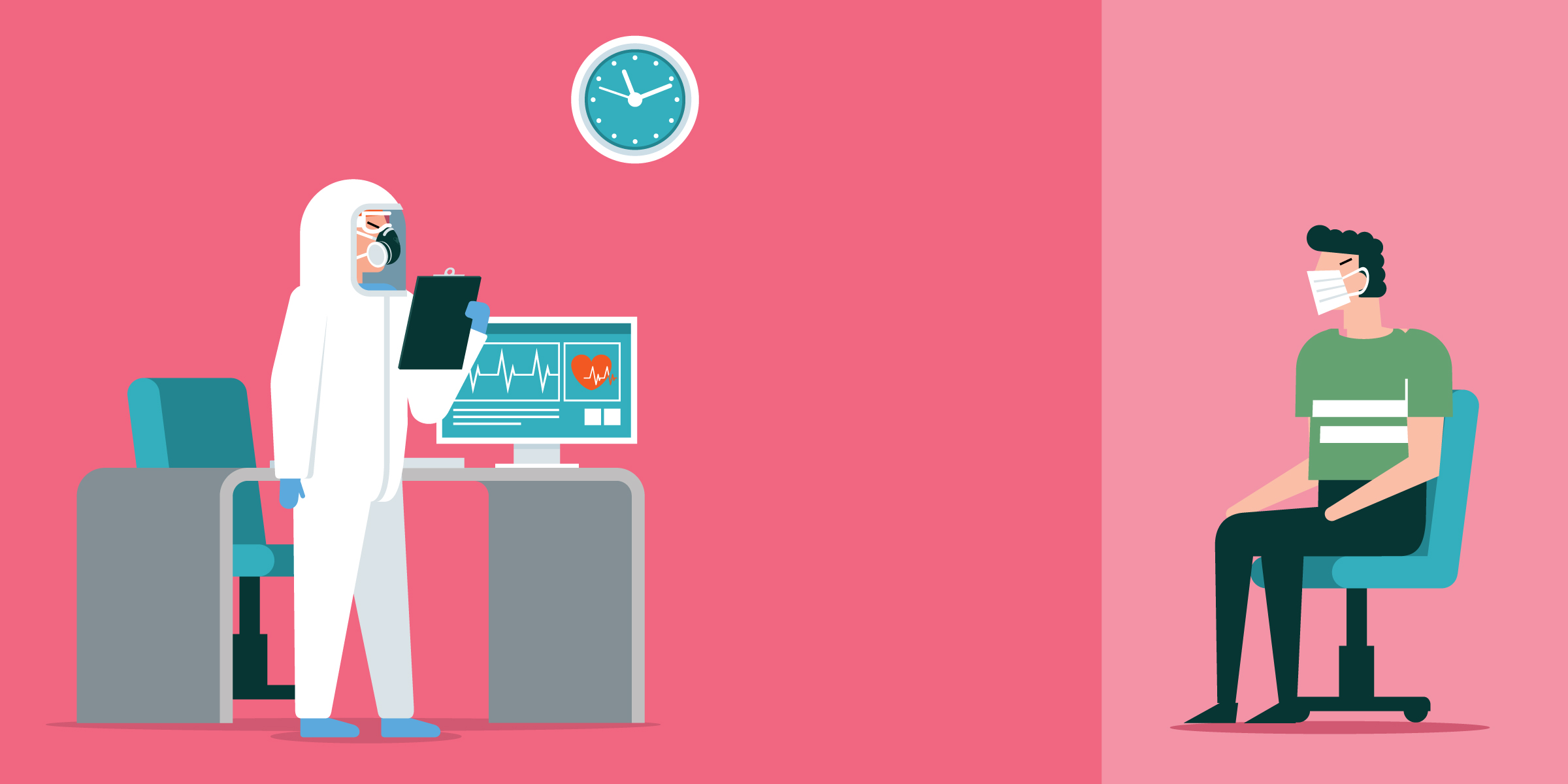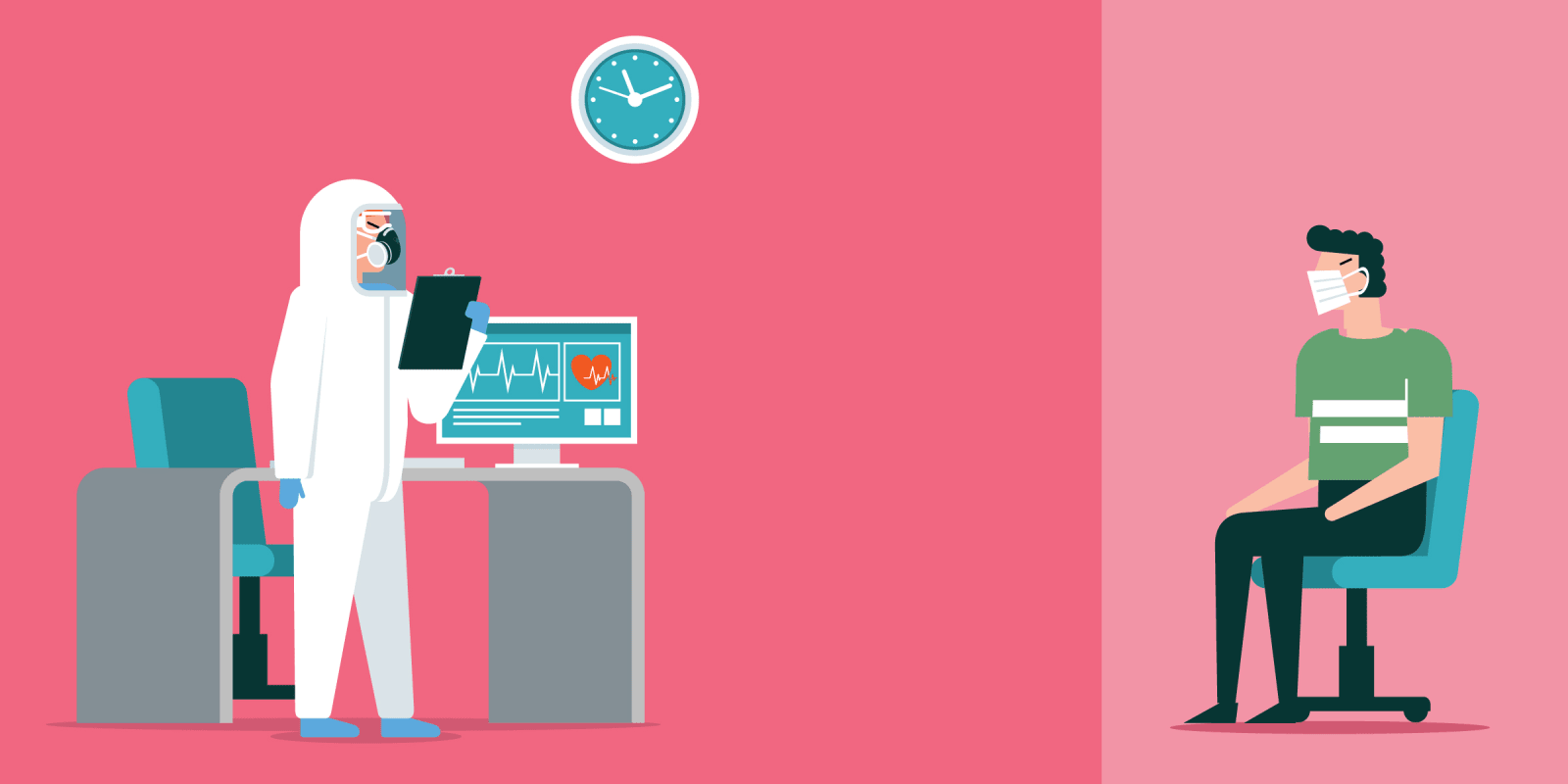
At the time of writing this, our primary care practice is conducting exclusively virtual patient visits. The following is a fictional vignette, which imagines what a return from virtual to office care could be like as we find our way through the COVID-19 pandemic. How will this change the way we interact with our patients face-to-face?
Today used to be called Wednesday. Now it is “In-Office Day number 1,” the first of my two days per week to see patients in person in our office. We started last week, and Alicia was my first non-virtual patient in over two months. In her late 50s, we have edged into middle age together during our 15-year relationship. Along with managing her diabetes and hypothyroidism, I’ve had the privilege of listening and providing comfort to her through her divorce and rebalancing of her family life. She has a warmth and expressiveness that just doesn’t translate all that well to the video screen.
The visit begins the usual way, with me reading over her chart notes and recent test results. Then I don my face mask and face shield and headed over to exam room seven. Ordinarily, I would knock, but in an effort to reduce unnecessary contact, I cover the doorknob with an antimicrobial wipe, twist and open the door a crack, and gently ask, “It’s Dr. M. Is it OK if I come in?” With Alicia’s permission, I enter the room.
There is no handshake or hug, just a measured amble over to my computer desk chair. Time stands still while I take in my new exam room landscape. The chair that sat directly to my left is gone — removed. It was where I preferred my patients sit so we could hear and see best, and notice each other’s expressions and gestures. Alicia always came in alone, but the extra chairs for family, friends, and caregivers are gone too, in keeping with our no-visitors policy. All surfaces are de-cluttered; no more information sheets, sticky note reminders, anatomical models, or any non-essential item where microscopic crowns might hide.
Alicia sits on the exam table about six feet away, in the “safe zone” that I am advised not to breach until it is time for the essential parts of the physical examination. We lock eyes, using what is visible of our faces to convey our relief to see each other in three dimensions. Then, as if on cue, we break into laughter. We giggle for what feels like five minutes or more at the absurdity of our disguises. My mask is the plain surgical type, but she has a stylish handmade variety.
“Is this for real?” she asks.
“I’m afraid so.”
“I’m just afraid,” she counters.
“Tell me more. What has it been like for you?” I ask.
She tells me of her struggles with her daughter, whose freshman year at college was derailed. They are on each other’s nerves trying to find privacy in Alicia’s small apartment. If one of them becomes sick with COVID-19, she isn't sure how they will cope. I lean in and listen, trying to notice any reveal in her eyes, tensing of neck muscles, audible sighs. How am I to show my own reactions? I find myself more attuned to words, vocal inflections, eye contact, and even sometimes narrating my own expressions (“I’m smiling ear to ear!”). Even now, returning to the live exam room, I must continue to use some of the skills I developed for the video screen.
Funny, but I don’t think the EHR will seem like an intruder when I only have to use one computer screen, instead of two. I’m glad that I’ve learned how to conduct video visits. They are a valuable option to prevent contagion, and to improve the availability and efficiency of primary care services. Still, there is a certain chemistry that came to life with patients actually there with me in the room. Colors were real, there was no subtle bandwidth delay in their voice, the room wasn’t shaking, the dog wasn’t barking in the background. And, although now tainted with apprehension, there is the return of the reassurance that comes with touch. They may be a bit sterile and lack the small visual portal into my patients’ home environment, but I’ll take real exam rooms over virtual any day — masks, face shields, empty counters, perpetual sanitizer aroma, and all.
Though this is a fictional scenario, I can vividly imagine how I would feel after the visit. Did I protect myself adequately, in case Alicia was an asymptomatic COVID-19 carrier? Were my fears obvious or distracting? Presence is a challenge during a virtual visit, but at least I know I won’t catch the virus through the cell phone screen. It felt better to see her in person, but did this really make a positive difference in her care? Maybe I would start to feel a bit better about this by “In-Office Day number 2.”
Illustration Collage by Jennifer Bogartz / Getty
All names and identifying information (even hypothetical) have been modified to protect patient privacy.
Click here to see more perspectives on COVID-19 from the Doximity network.
Click here for up-to-date news about COVID-19 on Doximity.







